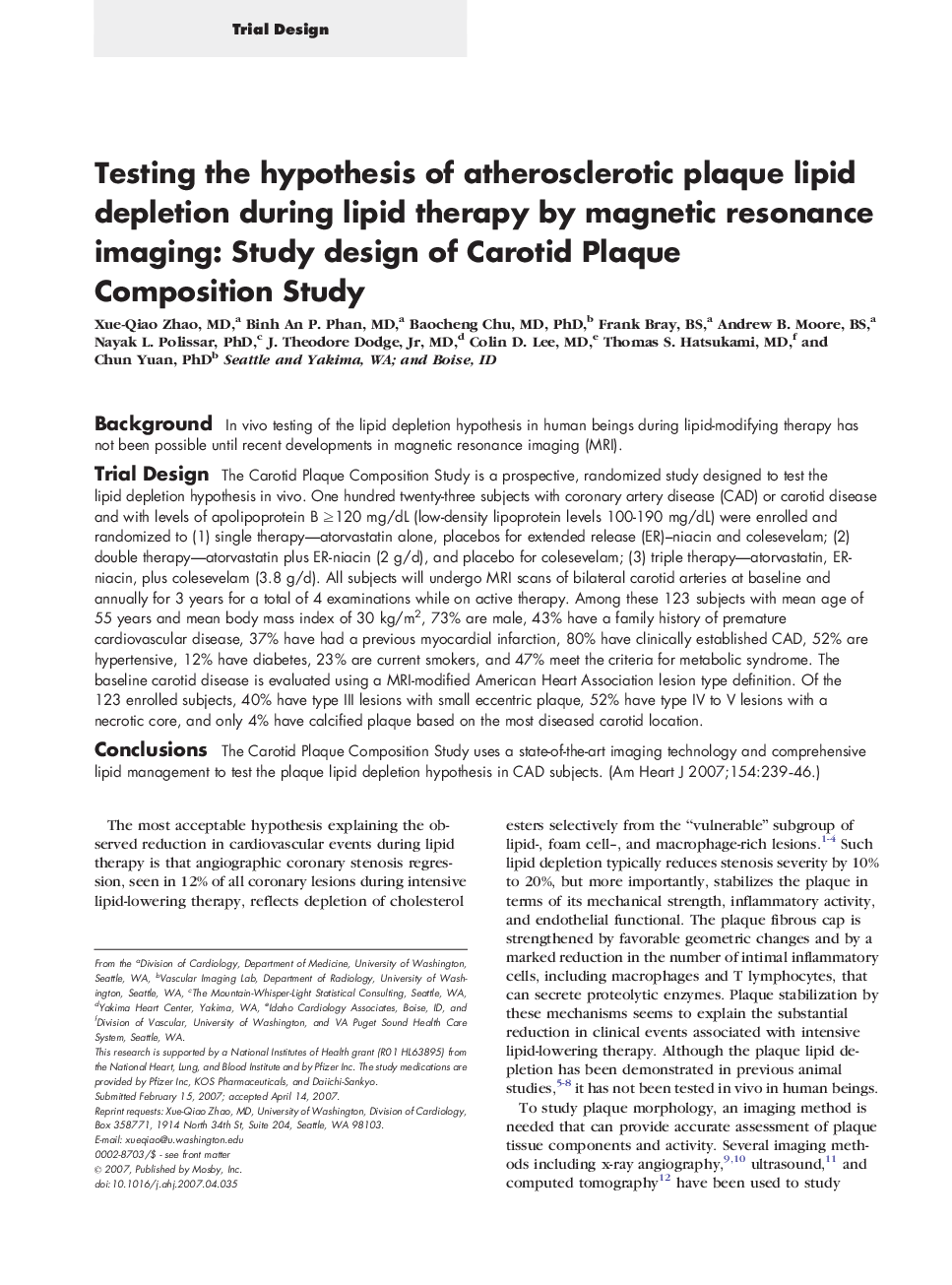| کد مقاله | کد نشریه | سال انتشار | مقاله انگلیسی | نسخه تمام متن |
|---|---|---|---|---|
| 2851530 | 1167853 | 2007 | 8 صفحه PDF | دانلود رایگان |

BackgroundIn vivo testing of the lipid depletion hypothesis in human beings during lipid-modifying therapy has not been possible until recent developments in magnetic resonance imaging (MRI).Trial DesignThe Carotid Plaque Composition Study is a prospective, randomized study designed to test the lipid depletion hypothesis in vivo. One hundred twenty-three subjects with coronary artery disease (CAD) or carotid disease and with levels of apolipoprotein B ≥120 mg/dL (low-density lipoprotein levels 100-190 mg/dL) were enrolled and randomized to (1) single therapy—atorvastatin alone, placebos for extended release (ER)–niacin and colesevelam; (2) double therapy—atorvastatin plus ER-niacin (2 g/d), and placebo for colesevelam; (3) triple therapy—atorvastatin, ER-niacin, plus colesevelam (3.8 g/d). All subjects will undergo MRI scans of bilateral carotid arteries at baseline and annually for 3 years for a total of 4 examinations while on active therapy. Among these 123 subjects with mean age of 55 years and mean body mass index of 30 kg/m2, 73% are male, 43% have a family history of premature cardiovascular disease, 37% have had a previous myocardial infarction, 80% have clinically established CAD, 52% are hypertensive, 12% have diabetes, 23% are current smokers, and 47% meet the criteria for metabolic syndrome. The baseline carotid disease is evaluated using a MRI-modified American Heart Association lesion type definition. Of the 123 enrolled subjects, 40% have type III lesions with small eccentric plaque, 52% have type IV to V lesions with a necrotic core, and only 4% have calcified plaque based on the most diseased carotid location.ConclusionsThe Carotid Plaque Composition Study uses a state-of-the-art imaging technology and comprehensive lipid management to test the plaque lipid depletion hypothesis in CAD subjects.
Journal: American Heart Journal - Volume 154, Issue 2, August 2007, Pages 239–246